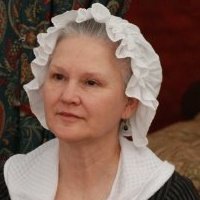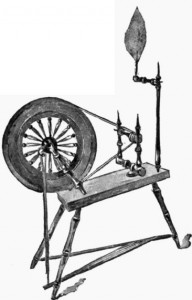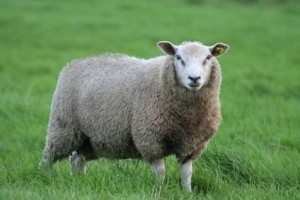 Welcome to my blog! The week of 29 June – 5 July, I’m participating with more than two hundred other bloggers in the “Freedom to Read” giveaway hop, accessed by clicking on the logo at the left. All blogs listed in this hop offer book-related giveaways, and we’re all linked, so you can easily hop from one giveaway to another. But here on my blog, I’m posting a week of Relevant History essays, each one focused on some facet of the American War of Independence. To find out how to qualify for the giveaways on my blog, read through each day’s Relevant History post below and follow the directions. Then click on the Freedom Hop logo so you can move along to another blog. Enjoy!
Welcome to my blog! The week of 29 June – 5 July, I’m participating with more than two hundred other bloggers in the “Freedom to Read” giveaway hop, accessed by clicking on the logo at the left. All blogs listed in this hop offer book-related giveaways, and we’re all linked, so you can easily hop from one giveaway to another. But here on my blog, I’m posting a week of Relevant History essays, each one focused on some facet of the American War of Independence. To find out how to qualify for the giveaways on my blog, read through each day’s Relevant History post below and follow the directions. Then click on the Freedom Hop logo so you can move along to another blog. Enjoy!
 Relevant History welcomes Peggy Earp, currently a resident of Lexington, Tennessee and the former co-owner of 96 District Fabrics, a provider of period-correct fabrics. Originally from Oklahoma, Peggy lived in South Carolina for twenty years along with her husband and two children before moving to Tennessee last September. After selling their business this year, she and her husband are enjoying a life of semi-retirement, and looking forward to the birth of their first grandchild. For more information, contact her through email at peggyearp (at) gmail (dot) com.
Relevant History welcomes Peggy Earp, currently a resident of Lexington, Tennessee and the former co-owner of 96 District Fabrics, a provider of period-correct fabrics. Originally from Oklahoma, Peggy lived in South Carolina for twenty years along with her husband and two children before moving to Tennessee last September. After selling their business this year, she and her husband are enjoying a life of semi-retirement, and looking forward to the birth of their first grandchild. For more information, contact her through email at peggyearp (at) gmail (dot) com.
*****
The year is 1775, and I live in the backcountry of western South Carolina with my husband and five children. We have forty acres, two mules, and a two room cabin with a loft. When I came here from northern Virginia as a newlywed, I had never considered the daily realities of feeding, clothing, and keeping healthy seven people.
In 1995 my husband, Dennis, and I, along with our children, began volunteering at Ninety Six National Historic Site, in Ninety Six, South Carolina. Through volunteering, we began our quest for knowledge of the Revolutionary War and the domestic activities of daily life during that period. The life of the soldier is well documented, but what about the family left at home: whether in town or the sparsely-settled countryside?
Many times over the last fifteen years, I have considered the beginning scenario above. If I were this wife and mother, what would I have done? How would we have lived? How would I have provided for my children?
 As we began researching the Revolutionary War, I developed a deep interest in the textiles of the era. Could our family, by our own hands, have provided all our own fabric for bedding, linens, and clothing? Could we have furnished ourselves with warm woolen cloth for winter clothes? What would producing our own wool entail? We would have to raise the sheep, shear them in the spring, wash the wool, card and spin the wool into yarn, and then weave the wool into woolen fabric.
As we began researching the Revolutionary War, I developed a deep interest in the textiles of the era. Could our family, by our own hands, have provided all our own fabric for bedding, linens, and clothing? Could we have furnished ourselves with warm woolen cloth for winter clothes? What would producing our own wool entail? We would have to raise the sheep, shear them in the spring, wash the wool, card and spin the wool into yarn, and then weave the wool into woolen fabric.
If we were to have nice linen fabrics, could we have possibly be able to produce that fabric from start to finish? Could we have planted, grown, and harvested the flax? Could we have retted, scutched, hackled, spun the flax into linen thread, and then woven the thread into fabric?
Could my family have produced all our cloth? It is my personal opinion, that no, we could not. Not even close.
Up until January of this year, Dennis and I owned a fabric supply business. We specialized in period-correct fabrics for reenactors, museums, historic sites, and movie productions. We traveled up and down the east coast, attending living history events. Early on, while speaking with the general public, I discovered that most people assume that in the “olden days,” everyone provided all needed items for themselves. That there were no places to buy ready-made clothes, or yard goods for making your own clothes.
What did the average family do about fabric and clothing? Did they provide for themselves, or did they barter or buy clothes and cloth? In my search for answers, I have concluded that what families could provide for themselves in 1775 is as varied as what families can provide for themselves today.
Most did not have enough land for growing sheep for wool, or for planting flax or cotton. Nor did they have enough hands for tilling, planting, tending, and harvesting. Children were taught at an early age to help with whatever chores were necessary for survival. Boys were taught farming, hunting, chopping wood, and other activities. Girls were taught cooking, sewing, spinning, and weaving.
But not all families were equal. Some families had all boys, or all girls, or had no children. Some families were plagued with illness, or with the death of one spouse. What did they do to meet these challenges?
Most families did make their own clothes, especially their underclothes. They were well-made, handed down, patched as needed, altered, until they were generally used up. The rags were then used for many purposes or sold to the rag picker. Some families did grow sheep and sell the wool, or maybe spun the wool into yarn, and used the yarn to barter for cloth goods. Or they grew linen or cotton and sold or traded it either as raw goods or as spun thread or woven cloth.
The possibilities are countless as to how they obtained their fabric. In western South Carolina there were several trading posts in the late 18th century. Their inventory lists show an extensive variety of cloth.
 There were also many itinerant spinners and weavers. You could grow your own wool or flax, and then wait until the spinner came by on their circuit. You provided housing for them for several weeks while they spun all the season’s wool into yarn or flax into thread. Or maybe you had the means to spin your own yarn, and the weaver came and wove all the yarn into cloth.
There were also many itinerant spinners and weavers. You could grow your own wool or flax, and then wait until the spinner came by on their circuit. You provided housing for them for several weeks while they spun all the season’s wool into yarn or flax into thread. Or maybe you had the means to spin your own yarn, and the weaver came and wove all the yarn into cloth.
Many of the large landholders did provide a good portion of their own fabric. They had slaves or indentured servants to perform all the labor. They could then produce enough cloth for the household linens and clothes for the servants. They may have custom-ordered clothing for the immediate family from the local seamstress, from Charles Town, or from England, depending on their weath.
In January of this year, Dennis and I sold our textile business. But this has not diminished my desire to learn more about fabrics and their manufacture in the 18th-century American South. My research goes on!
*****
A big thanks to Peggy Earp. She’ll give away instructional DVDs from Renee Gillespie on spinning with a drop spindle or spinning wheel to two people who contribute legitimate comments on my blog today or tomorrow. Delivery is available worldwide. Make sure you include your email address. I’ll choose the winners from among those who comment on this post by Monday 2 July at 6 p.m. ET, then publish the name of all drawing winners on my blog the week of 9 July. And anyone who comments on this post by the 2 July deadline will also be entered in the drawing to win one of two autographed copies of my book Regulated for Murder: A Michael Stoddard American Revolution Thriller.
**********
Did you like what you read? Learn about downloads, discounts, and special offers from Relevant History authors and Suzanne Adair. Subscribe to Suzanne’s free newsletter.

What an interesting subject! I’ve read inventories of some of my New England ancestors’ estates, and I was surprised that bolts of fabric were not only listed but valued more highly than most of the other household items.
Thanks for stopping by, Sheila. I’ve come across similar findings in my research. When fabric peddlers traveled through the backcountry, women mobbed them. In my second book, The Blacksmith’s Daughter, there’s a brief scene with a peddler who brags about women near Ninety Six, SC squabbling over his bolt of coffee-stained fabric, then paying a price for it that gave him an excellent profit.
Peggy, I’m grateful to have you as my blog guest today. And there’s a reason why you received an acknowledgement in my first book, Paper Woman.
Way back in 2000, you were kind enough to loan me some of your period clothing so I could participate in a living history event at Ninety Six National Historic Site. That was my first of many experiences with living history and reenacting.
It showed me the value of hands-on participation in helping me depict sensory impressions in my fiction. It also showed me a wholesome, educational activity in which I could involve myself and my two young sons. They’ve grown up to enjoy history of all ages because of their ongoing interest in reenacting.
Over the years, you and Dennis have been so helpful with everyone who came into your sutler’s tent at reenactments. I’m sure your generosity has made history come alive for many people.
Thank you!
Wow, what a fascinating post. It’s perfectly logical that the average farm family could not have produced all their own fabric needs from start to finish, though they could and did do parts of it.
Reading the Little House books as a kid, I remember reading some detailed descriptions about how the Ingalls family acquired the cloth they needed for family clothing needs on the western frontier. Much of it is similar to what Peggy has said here, though it, of course, diverges once the family got its first sewing machine the mid 1880s.
For the 18th century, I’ve read that most women had their stays made by professional staysmakers, rather than doing it themselves, as it was thought to be a complicated bit of construction. And after finding sites online that give tutorials on how to make them, I can only agree! Right now, I’m wanting to try to make a shortgown and as someone who doesn’t know how to sew beyond repairing a ripped seam, even the prospect of this is pretty daunting, though I’m much more comfortable with the idea of hand sewing it than I would be to machine sew it.
I’m sorry to have never had the chance to visit 96 Fabrics, as I live only about 20 miles away in Anderson. Missed opportunities…
Hi again, Tracy! 96 District Fabrics is still in operation and shouldn’t be that far from you, and unless I’ve misunderstood — Peggy, please confirm — they’ll bring the tent to Sutlers’ Row at the Camden reenactment in November.
Peggy’s post shows how interrelated we humans are to each other. Through great effort, some people achieve an existence that’s mostly self-sufficient, but we really do need each other.
Suzanne, thanks for the kind comments about your beginnings days as a reenactor. As you know, for most, once you get started, it is all consuming. It’s all about sharing information with each other in the reenactor community, and it was a pleasure to share with you, Suzanne. And to see you take off in this thing we do.
Tracy, we did sell our business back in January…..but it continues on. The new owners are Beth and Jimmy Webb, and they are in Bishopville, SC. You can find them at http://www.96storehouse.com or 96fabrics@gmail.com.
Thanks Peggy and Suzanne for this look at clothing and fabric during Colonial and Revolutionary times–it really makes me think about how we have once more gotten rather gluttonous in our lives today with closets full of semi-disposable clothing. Of course wool, cotton and linen wear better/last longer than the synthetics available today.
It seems as if not only fabric was valued more then, but workmanship as well. I cannot see our descendants 200 years from now being able to hold something stitched today (or even reproduce the material). Somehow, that makes me sad…
Linda, thanks for commenting on this post. People certainly did care more for their clothing in times past. Like other items they owned, they tried to repair clothing instead of throwing it away.
Synthetics don’t hold up as well as natural fibers. Polyester melts. And considering some of the ghastly clothing styles we’ve seen in the past few generations, would you really be sad to see some of those disposable garments lost?
This is an interesting post. When I started knitting, and learned a little bit of spinning, I did start wondering how pioneer families ever could have had to time to clothe and feed themselves! It’s almost a relief to know that they didn’t do it all themselves. And yeah, I wouldn’t be thrilled to have to hang on to what I wore in the ’80’s. ><
Welcome back, Mel. Myth-busting. It’s what often happens on Relevant History. I’ve grown vegetable gardens in the summer. The amount of work that goes into that, even using modern “cheats” like a gas-powered soil tiller, led me to sniff a myth in that story of pioneers being self-reliant.
When you think about it, it makes perfect sense. You often read about women buying a dress-length of calico, but somehow I never thought beyond that. You’d not only need the land to grow the sheep (or linen or cotton), but also the wheel(s) and loom(s) and space to set them up, and knowledge to use them. And I’ve even read “Silas Marner,” so I know about the Weaver of Raveloe!
Glad you could stop back in, Sandra. You’ve pegged it. It isn’t just that doing it all is time consuming. It’s also expensive. For the vast majority of pioneers, the expense of raising the sheep far outweighed that of buying the wool.
We do drop-spinning in Elizabethan reenacting. There is a drawing of a town with many people walking through the scene, one of them is a woman walking along while drop spinning. (I’m not that good! I have to stand still to spin.) I spin wool. I understand that you must spin flax wet, but I’ve never tried it. I have tried spinning silk. The fiber is so strong that it cut my fingers as I tried to spin it. Elizabeth I decreed that every man should wear a wool cap on Sundays. The result was that there was a market for knitted or felted caps, items that are small, but take many steps to create from shearing to knitting! There were businessmen who paid piecework rates to women for one step of the process. That law kept many people from poverty!
Welcome, Jill! I’d never heard the story about Elizabeth I’s decree about wool caps on Sunday. What prompted that?
Some comments were made as to the value of fabric in the 18th century, and it’s true…..the value was much greater than it is today. There are hundreds of probate inventories listing every piece of clothing the deceased owned. I did a very crude comparison several years ago, and I would equate buying one new set of ready made clothing for a family of six in the 18th century, to buying a new mid-sized car today. No wonder clothing was willed to the next generation.
Thanks for sharing this information. Well done!